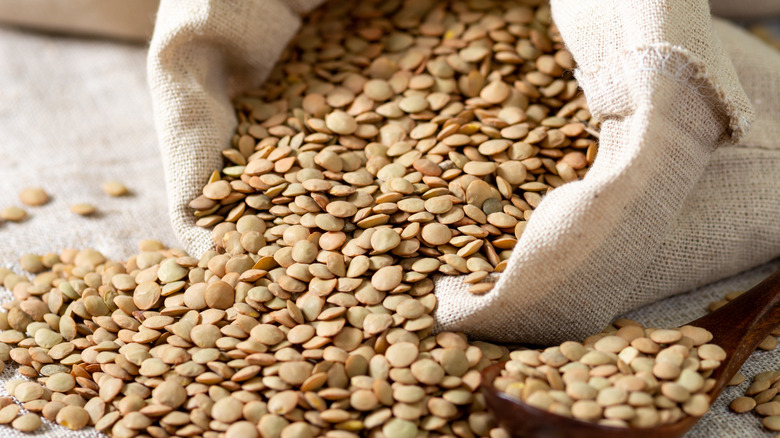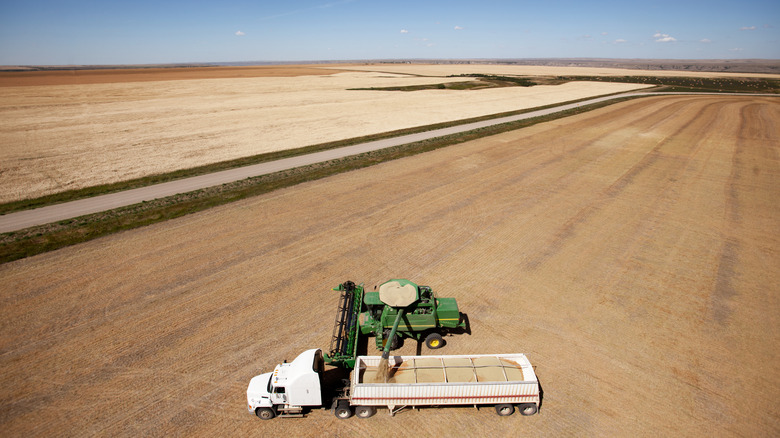This Is Where Most Of The World's Lentils Are Grown
While India might be the world's largest consumer of lentils, the country only ranks second place when it comes to production. Lentils might have a role in culinary cultures around the globe, but the number one producer isn't one that would likely come to mind.
Lentils have been around for a long time. In fact, they find their roots in ancient civilizations. In the Biblical story of brothers Jacob and Esau, Esau trades his inheritance away to his brother for a simple pot of lentil stew (via NPR). They're actually one of the world's oldest cultivated crops and have a historic place in many Middle Eastern and Asian countries because of their rich heritage in those regions (via NPR). According to America's Test Kitchen, there is evidence that our ancient ancestors foraged for a form of wild lentil more than 13,000 years ago.
Throughout the Indian subcontinent lentils are used in a dish most commonly referred to as Dal (via Bon Appétit). It's a staple food that can be used with a variety of herbs, pastas, meats, and vegetables to produce a filling and nutritious meal. Lentils are also low in calories and high in protein, iron, potassium, and manganese (via Lentils.org). India grows plenty of lentils for itself, but it still needs to import a large percentage of the legume to feed its 1.37 billion residents (via Yale University). So it turns to the world's largest producer of lentils: Canada.
Canada rules the world of lentil farming
Canada has been producing lentils since the 1960's (via The Canadian Encyclopedia). It was originally used as a rotational cover crop to keep fields from lying fallow outside of the growing season. Lentil production in Canada then grew over time until it took the top spot around 2006 (via The Canadian Encyclopedia).
Around 5% of Canada's lentil crops are grown in the Western region of Saskatchewan where they are exported around the globe (via Lentils.org). The crops are seeded in early May and harvested later in August. Only the pods of the plants are harvested then, and the remaining stalks and roots are left to continue serving as cover crops just as they did originally (via Lentils.org). Saskatchewan's cool temperatures and fertile soil makes for the perfect conditions for growing lentils. According to Heart Beet Farms, lentils thrive in sandy loam soils like those found in Western Canada.
The production of lentils and other legumes has been a huge economic boost for Canada's agriculture. Some have also called for the country to do more processing work to capitalize on its ample supply (via The Financial Post). Much like other legumes that grow well in the Great White North, lentils are a great source of plant-based proteins. They can be used in many non-meat alternatives, but Canada currently lacks the infrastructure to handle the processing of all of the lentils themselves, and are mostly exported instead (via The Financial Post).

